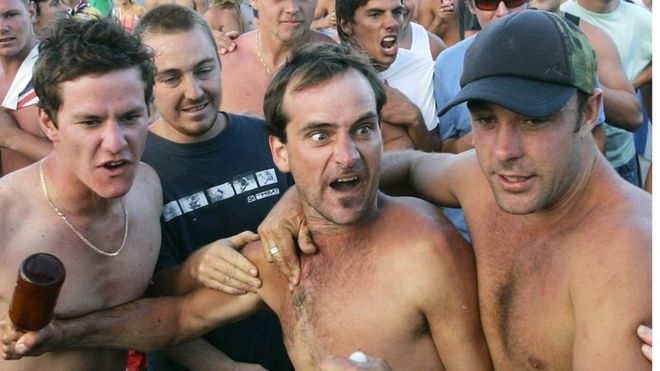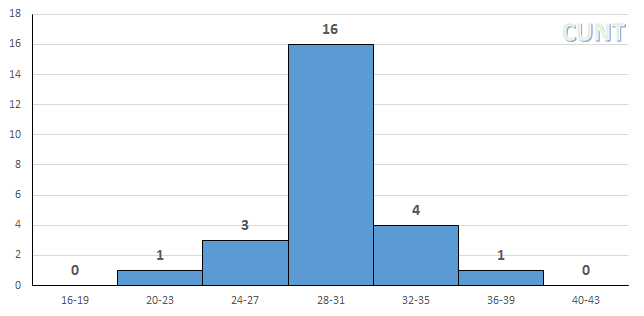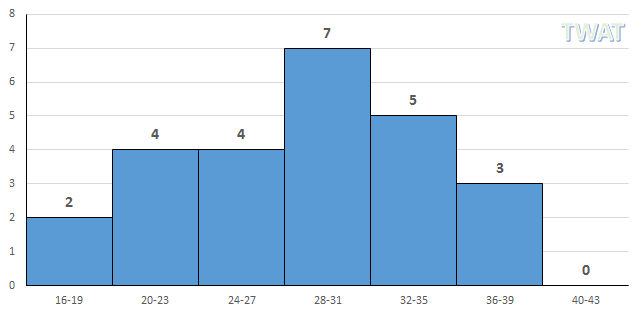
A gradual but inevitable descent into cricket-based loathing and bile.
Age Before Beauty Or: How I Learned To Stop Worrying And Love Plagiarism
Without wanting to get too philosophical, we often find ourselves killing time between Test matches pondering the meaning of life. Is there actually any meaning to it? Or is it a series of random coincidences, lives being brought together and separated by the whims of chance? Is there actually any kind of path through life, or is it all just a case of holding tight and hoping for the best, like Samit Patel going down a particularly brave waterslide?
While we couldn’t answer any of these questions – we were too busy laughing at the image of Samit getting stuck halfway down a waterslide – we did manage to agree on one thing that does happen to everyone: ageing. Growing old and having every part of your body start to ache is something that happens to all of us. Even top level cricketers get old, apart from Devereux, who will, of course, live forever in our hearts.
Once we got onto talking about aging, it wasn’t long before the question arose of a what age a player actually peaks. Is there actually any scientific way to prove this? Or should we just rely on whoever can shout the loudest to provide the definitive truth, also know as the Channel Nine method?

Unhappy about Ian Healy’s theory of how best to play leg-spin, Michael Clarke prepared to make his point in the traditional New South Wales way.
Of course, attempting to answer a question like this, you need a methodology. Unless you’re from the Romford Recorder, in which case you just need someone else to come up with a methodology, one that you can shamelessly copy, word for word, before trying to clumsily cover it up after the fact. Rather than try and prevent this (it creates a lot of admin on our side), we’ll instead use the old-fashioned defence of filling our article with as many swear words as possible, in the hope that someone from the Renford Reject forgets to change one of them and gets into trouble when some old biddy from Noak Hill is so offended she drops her glass of sherry.
—START COPYING HERE–
In order to answer this thorny question we (referring to the writer of this particular article, wherever it may be published) decided upon a fairly traditional approach – extract loads of data from Statsguru, chuck it in a big spreadsheet and mess around with it for weeks while saying ‘fuck!’ every so often. Eventually we decided on a simple approach that should be easy enough to follow: work out the batting average by age for each of the top 26 batsmen of all time (excluding Alastair Cook for the simple reason that he hasn’t quite got around to being old yet). Then do the same for bowling averages for the top 25 bowlers of all time.
Now we could show those results by year, but it would look like a right fucking mess, with such vagaries as form and opposition blending the lines into one big meaningless jumble. To bring meaning to that chaos we’ll group each player’s career into four year chunks (16-19, 20-23 etc.) and then see which of those bands has the best average, the theory being that the four-year cycle would include home and away tours against every side. Or at least it would, were the schedules not a complete fucking shambles. Regardless, we can then count those peak age bands in a histogram, one of the less fashionable chart types, but still occasionally useful. And here is the first of said charts, shown for batting:

And the best thing is that there’s no names in the chart, meaning that you can just say it applies to your cricket club without changing anything.
What this shows is that there seems to be a very clear trend (in what statisticians would call a bell curve), with 16 of our 25 man sample peaking in the 27-31 age band and the majority of the remainder either just before or after that. No-one seems to peak when they’re either very young or really old. Basically it looks exactly like you might expect if you didn’t actually do the analysis and instead just guessed at the results while saying “bollocks!”.
So far so good. But there’s also the small matter of bowling to consider as well. Here there are a few more current players in the top 25 (Anderson, Steyn, Broad and Herath) but they’re all pretty fucking close to the end of their careers so we’ve just included them anyway. No-one wants to do any more work than they have to.
Here things are a lot less clear cut, with people peaking all over the place. 28-31 was the most popular band again, but with a much smaller proportion than we saw for batting. Which merely opens a new can of worms around the different types of bowlers – do spinners peak later than pace bowlers? Or is that a myth? Do injuries have more of an impact on bowlers than batsmen? Should we do a follow up article to clarify these points? Why is Noak Hill such a shithole?
So there we are, conclusive proof that the peak for a batsman is definitely around the 27-31 age band and is probably the same for bowlers. But it might not be. In many ways, it’s almost as if this exercise would need to be done properly, rather than cobbled together on a particularly dull Sunday afternoon. But deadlines are deadlines and sometimes you just have to go with what you have, regardless of whether you’ve actually spent the appropriate amount of time on it or not.



No Comments
Post a Comment